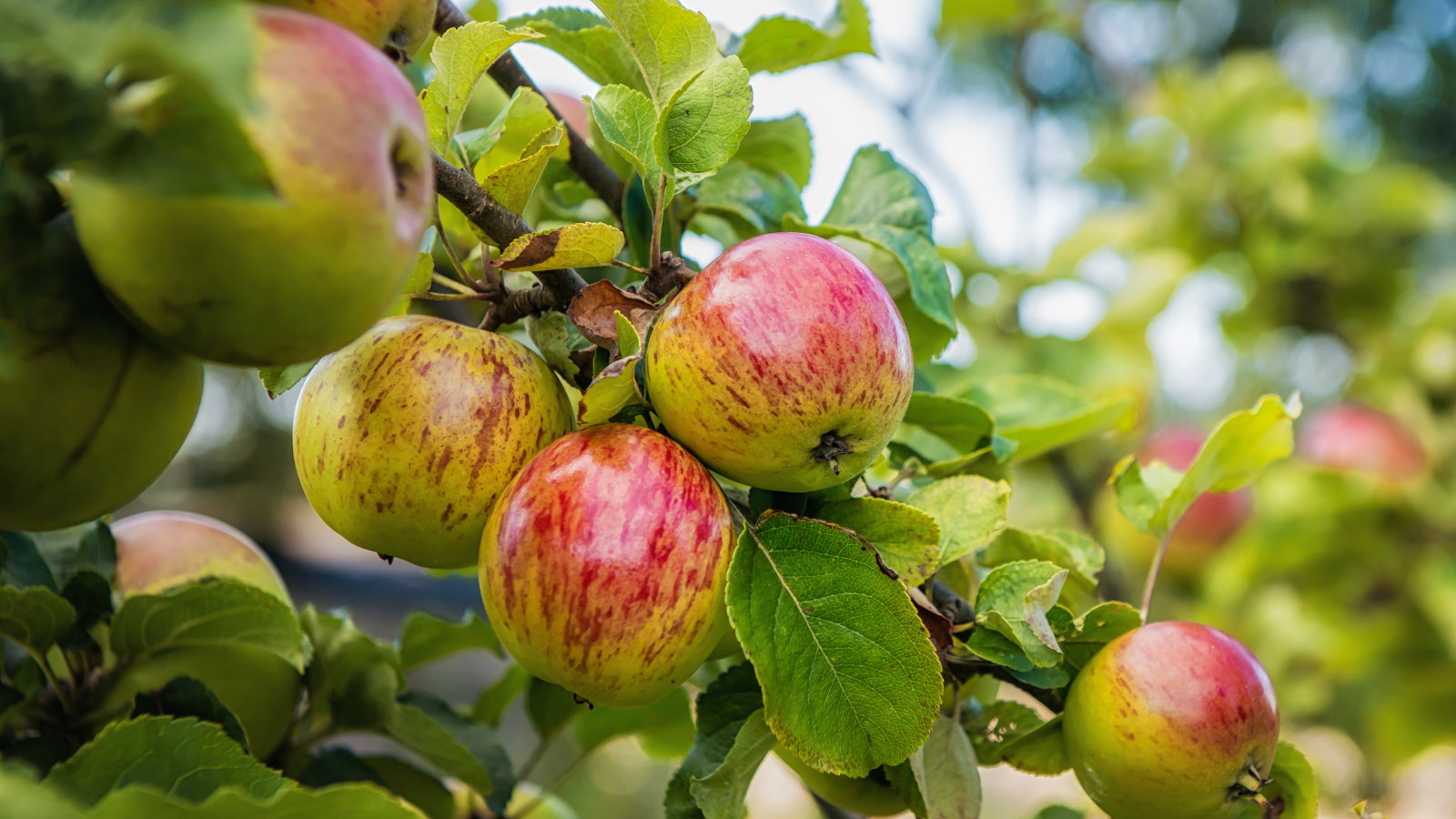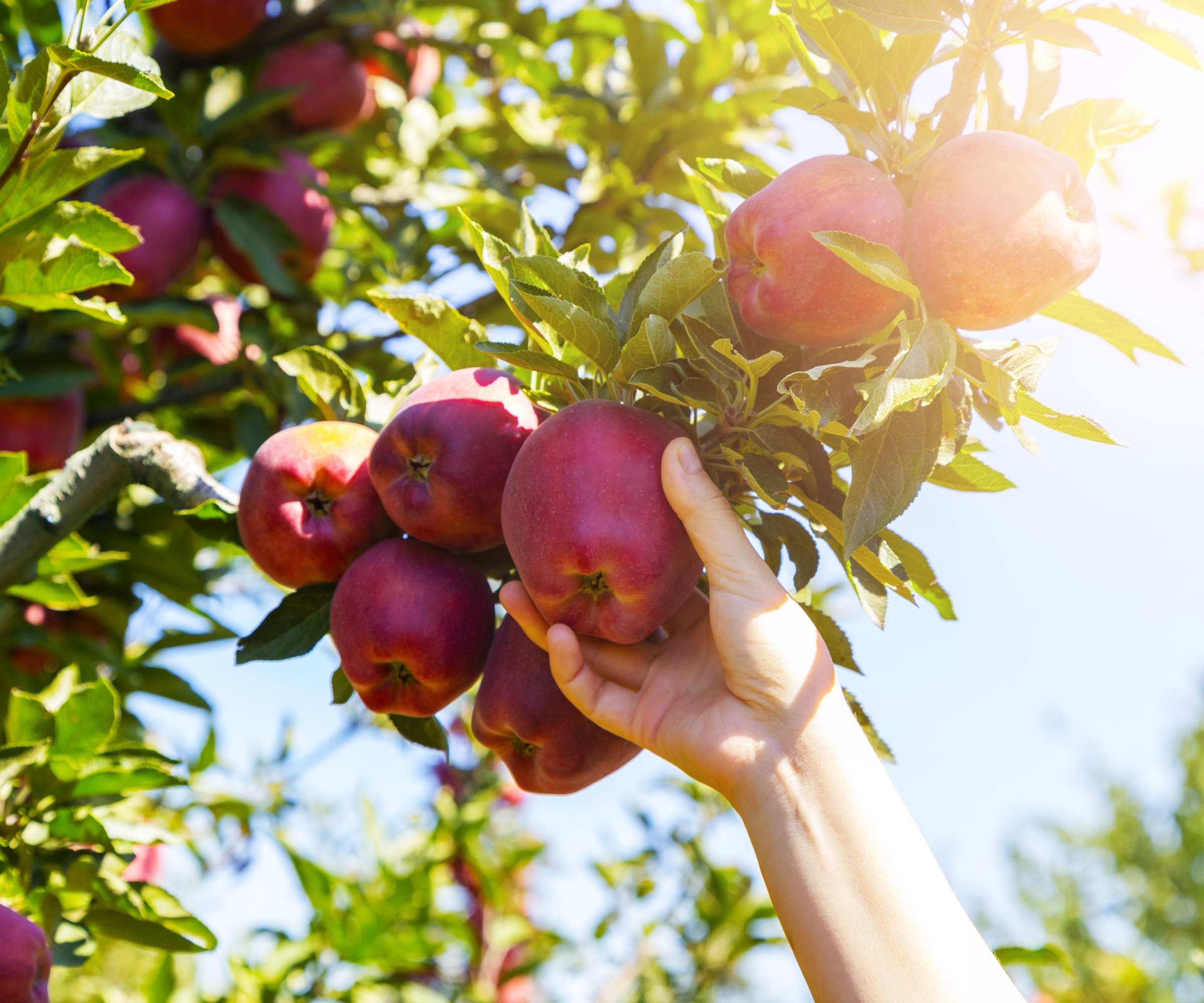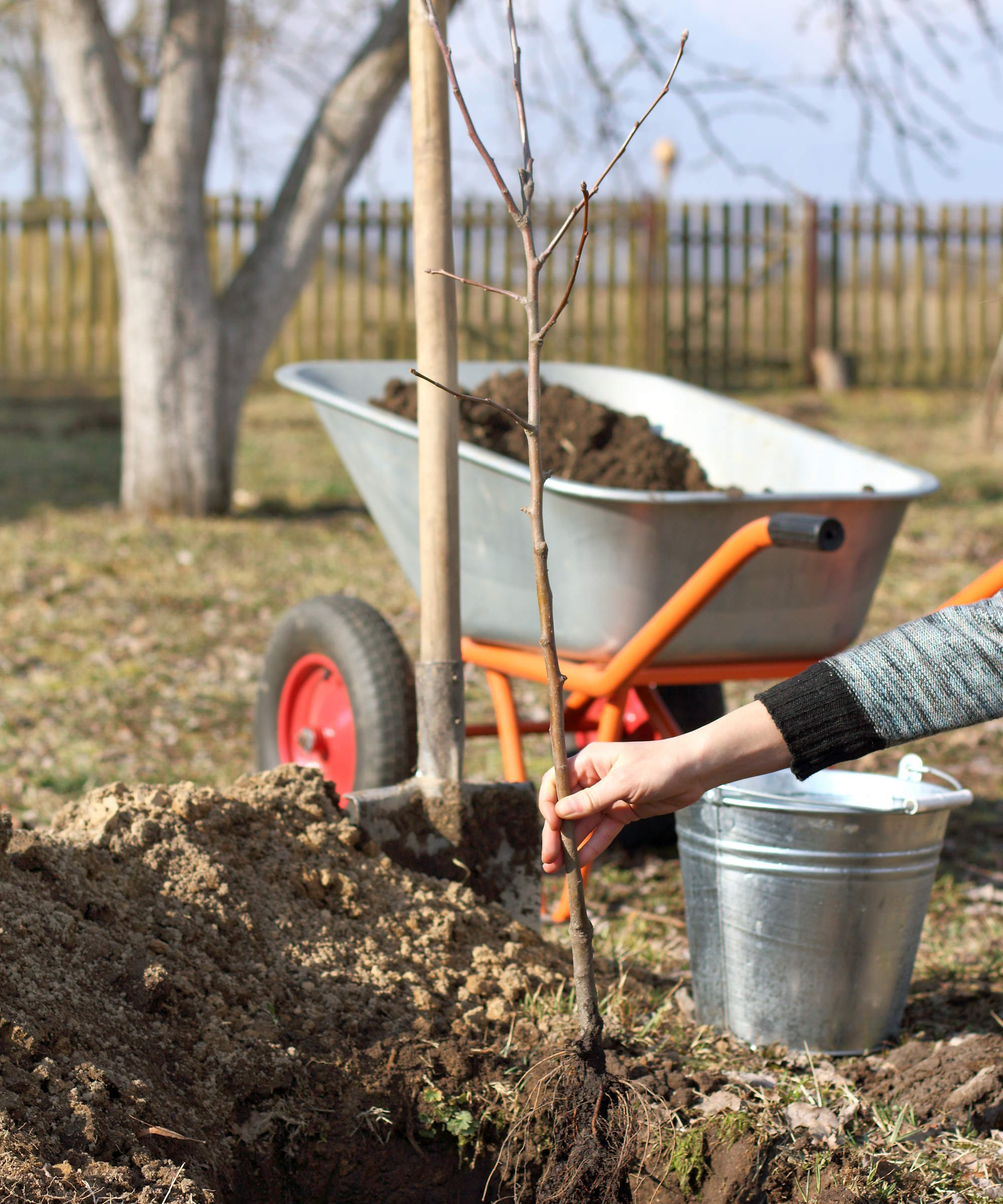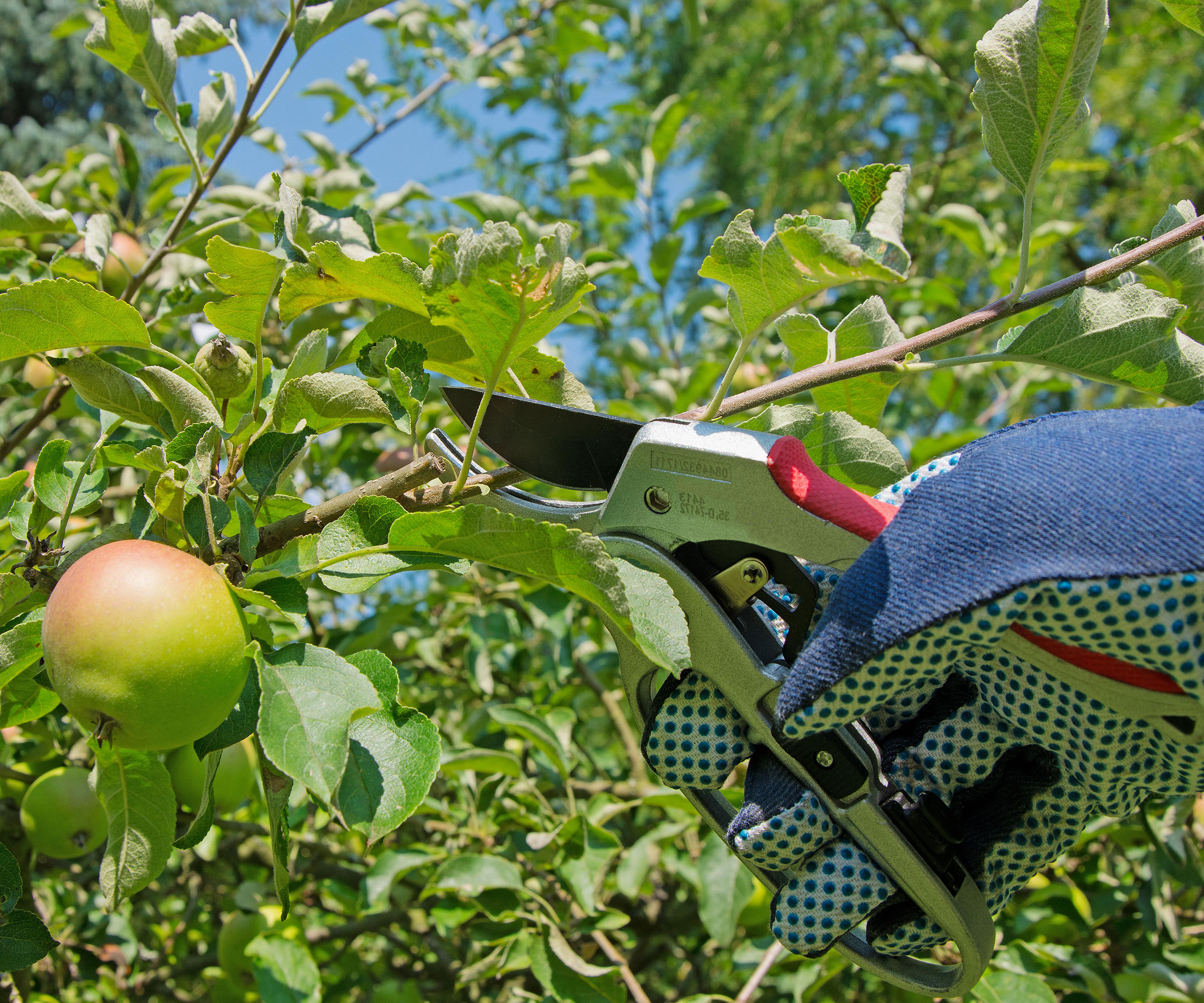
Knowing how to grow an apple tree means you enjoy success with one of the most popular fruits in the world. Apple trees are grown globally and, as there are thousands of cultivars of cooking, eating, cider, and juice varieties of apples, there can be many reasons to grow an apple tree at home. One of those reasons has to include the simple pleasure of eating a ripe apple freshly plucked from the tree.
There are choices galore for growing apple trees. Trees are available in different sizes and fruits come in varying colors, shapes and flavors. It means there will be an apple tree out there that can fit any desire and backyard.
Apple trees are one of the best fruit trees you can pick to grow at home. They are suitable for many different backyard ideas and are easy to maintain. To help you learn how to grow an apple tree, this guide looks at how to plant and care for them. I maintained apple trees in orchards and kitchen gardens in the UK and got tips from an experienced fruit tree expert to help you learn about growing apple trees.

How to grow an apple tree - our expert guide
Depending on the variety, apple trees are hardy in US hardiness zone 3 to US hardiness zone 9. There are over 7,500 apple tree types globally, but the range available to grow in backyards is more limited.
Do some research before selecting a type, including ensuring your chosen apple variety is suitable for your US hardiness zone and the right size for your yard. Apples are commonly grafted onto various rootstocks to control their growth. Standard trees can reach 25 feet, while dwarfing rootstocks can make apples ideal fruit trees for small gardens or growing in pots.
Apple trees are one of the easiest fruit trees to grow. They can be vulnerable to diseases and pests, however, some cultivars are naturally resistant to common diseases like rust, apple scab, or fire blight. Looking for such disease-resistant varieties, and self-fertile cultivars, can make growing an apple tree that little bit easier. Let's deep dive into how to grow an apple tree, starting with planting.
Apple tree planting tips

Apple trees are available bare-root or container-grown from garden centers, nurseries, or online. The type you pick can impact when you plant apple trees, as bare-root trees are commonly available from late fall to spring while container-grown trees are available year-round.
Planting fruit trees is best done from fall to spring when the tree is dormant, but not when the ground is frozen or waterlogged. Though containerized apple trees can be planted year-round, avoid planting in summer when the tree may struggle to establish in hot weather.
Apple trees are very versatile, they can grow in an orchard, in a large bed, on a lawn, or trained against a wall or fence as a fan, columnar, or espalier apple tree. They want an open and protected position, within 100 feet of a compatible tree if they require cross-pollination.
‘All fruit trees, including apples, need full sun to thrive - think six to 10 hours a day,’ advises Susan Poizner, a fruit tree expert, author, and creator of Orchard People. ‘If an apple tree is shaded, it won’t produce well.’
Susan adds: ‘Well-drained soil is essential because, as we say, “fruit trees don’t like wet feet”. Avoid swampy areas; they do best in soil that allows water to drain away so roots don’t sit in moisture.’
Standard apple trees want to be spaced at least 20 feet apart, while semi-dwarf trees can be 12-15 feet apart and dwarf apple trees 6-8 feet. Check for the location of any overhead wires or underground cables, pipes, or utilities that need to be avoided. Also, consider the size of the tree when mature and ensure it will not block the sun from your property or other plants.
Honeycrisp Apples are known for their delicious taste as the fruits are crisp, crunchy and amazingly juicy.
One of the most popular apple varieties, Galas don’t have serious pest or disease issues.
A medium-sized tree with crimson-red fruits. Immune to scab and moderately resistant to leaf rust.
Apple tree care tips

- Watering - The first key aspect of how to grow an apple tree is watering. Young apple trees must be watered regularly to help them establish a strong root system. It is advisable to water deeply and frequently for the first few months till the apple trees are established in their new home. Established apple trees will only need watering during extended periods of warm and dry weather. Susan Poizner explains how the watering needs will depend on your soil type. She says: ‘In clay soil, which retains water well, water deeply and slowly so moisture reaches the deeper roots that might be up to 12 inches down. Allow the soil to dry out between waterings to avoid root rot. For sandy soil, which drains quickly, you’ll need to water more often, though each watering session can be shorter.’
- Fertilizing - Apple trees require nutrients for strong growth and fruiting, and there are recommended ways to help provide this to them. Susan Poizer recommends mulching around trees with two inches of compost in early spring as ‘the best way to feed apple trees naturally’. She says: ‘In spring, the tree draws energy stored in its roots, and as it starts to grow, the soil microorganisms will begin breaking down that compost, releasing nutrients that your tree can use during the early summer months.’ When mulching around trees, it is important not to pile it around the trunk - which can cause rot. An alternative is to fertilize fruit trees with a balanced general-purpose organic fertilizer in the spring, such as this organic all-purpose plant food on Amazon. Fruit trees growing in pots will need more regular feeding, such as every few weeks with a liquid feed in summer on top of the spring application of balanced fertilizer.
- Pruning - Knowing how and when to prune an apple tree keeps any tree healthy and productive. Apple trees are best pruned during dormancy from November to early spring, while trained apple trees are also pruned in summer. As for how to prune an apple tree, remove dead, diseased, and damaged stems and cut out congested branches and vigorous upright stems. Annual pruning helps with air circulation which can prevent pest and disease problems.
- Harvesting - Depending on the variety, apples will be ready to harvest from late summer through fall and they want to be picked regularly as they ripen on the tree. An apple is ready to harvest once it has developed its final color and tastes sweet. A ripe apple should come off the tree when cupped and gently twisted, if you need to pull excessively it is a sign it is not ripe.
FAQs
Can you grow an apple tree in a container?
You can grow apple trees in pots. Dwarf varieties are suitable for large containers on a patio, deck, or balcony. ‘A great option is columnar apple trees on dwarfing rootstocks,’ says Susan Poizner from Orchard People. ‘These are narrow, compact, and perfect for container-growing. Just ask your nursery about super-dwarf or columnar trees for containers.’
Apple trees should be planted in a free-draining potting mix and placed in a sunny, protected spot. Regularly check the moisture levels and water plants in containers often during warm weather.
A columnar apple tree suited for growing in containers to give a harvest of tangy, crisp apples in smaller spaces.
Don’t let a lack of space put you off from growing apples or any fruit trees as modern breeding advancements have opened up the possibilities for fruit in small spaces.
Along with dwarf apple trees, dwarf types of peach, lemon, olive, fig trees and more are now available from nurseries and online retailers to get delicious fruit harvests as part of any small backyard ideas. Knowing how to grow an apple tree means you can have success in any situation.







